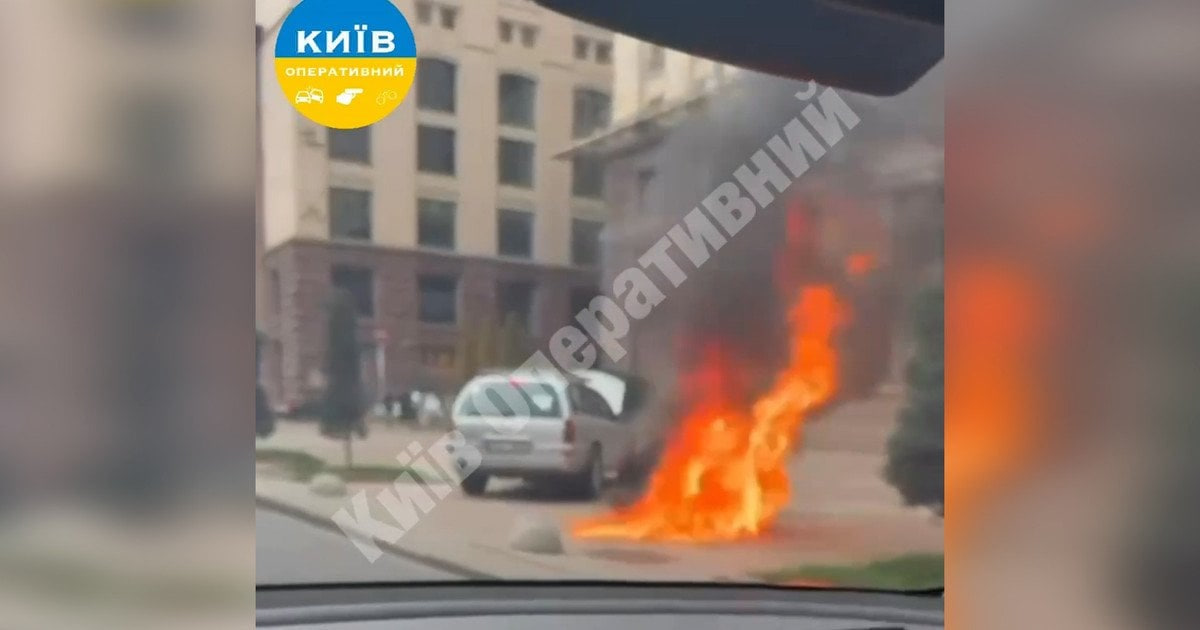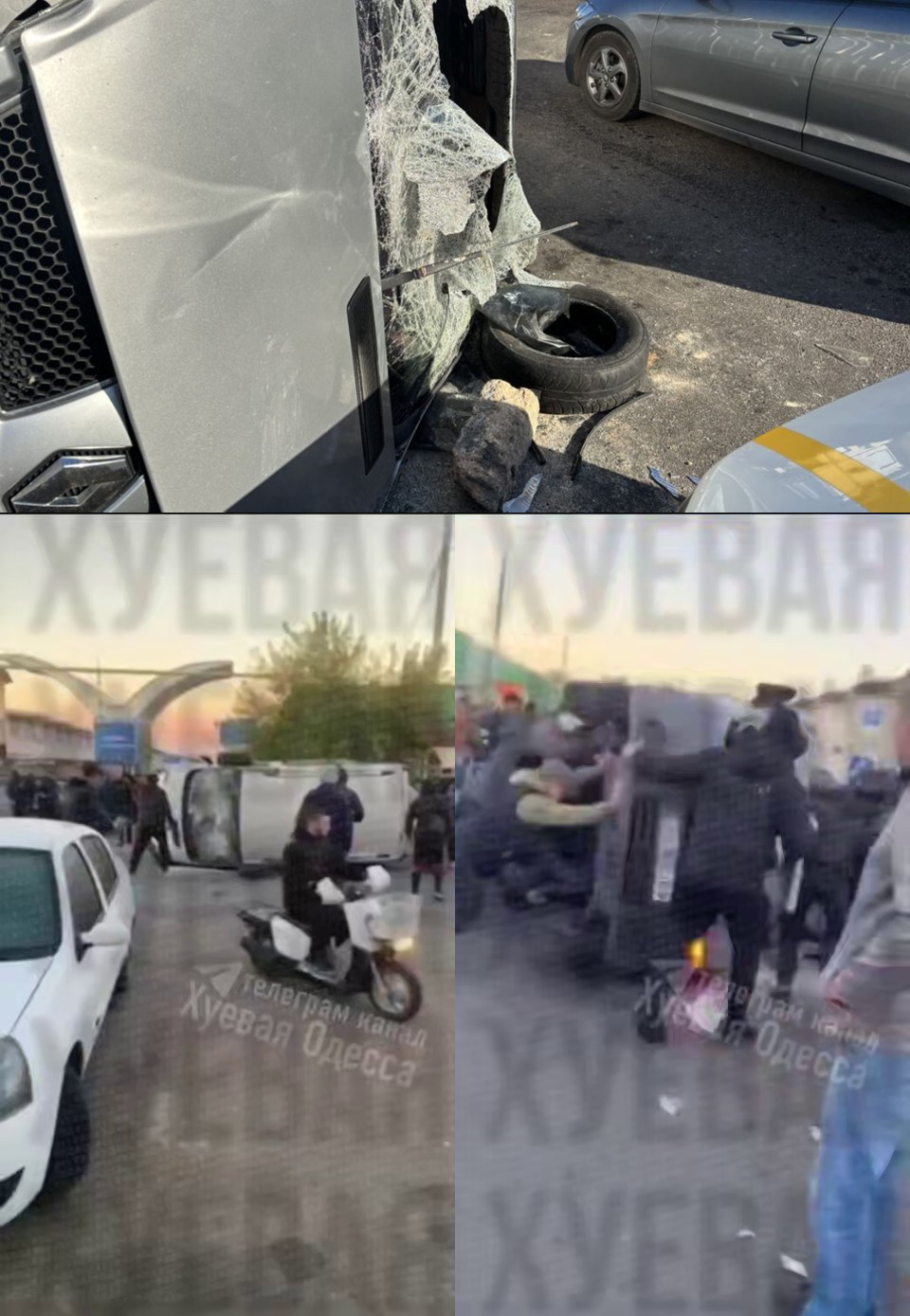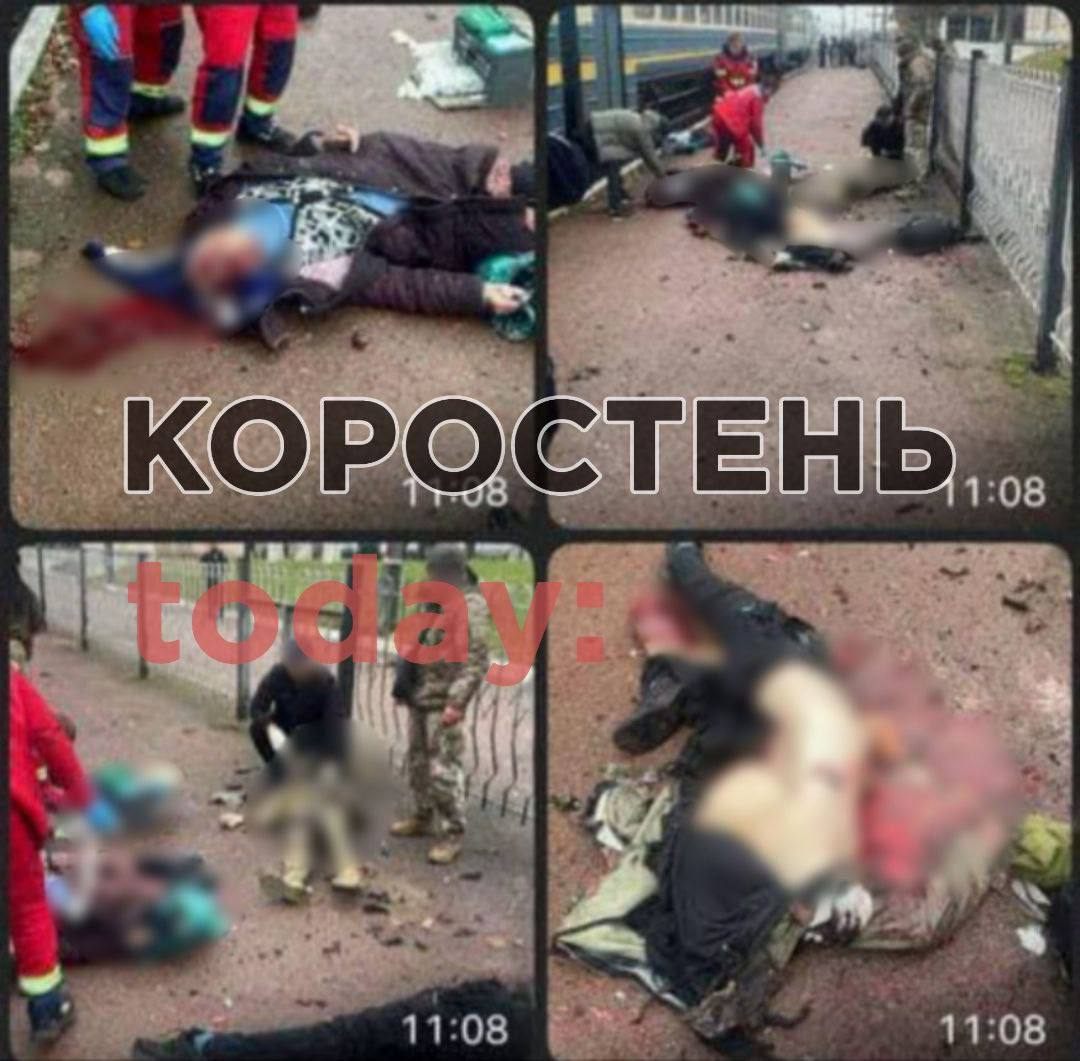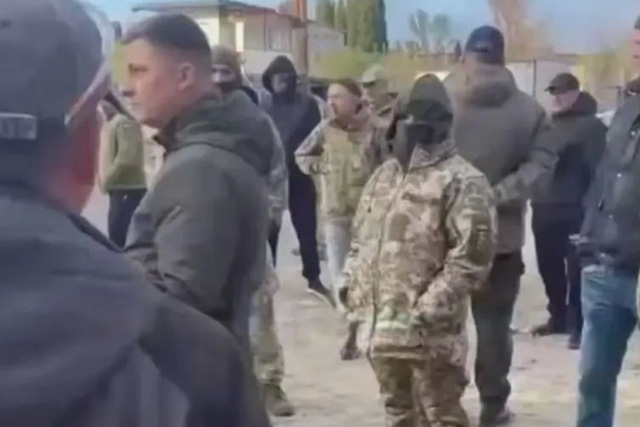The development and continuation of our media depends solely on its audience. Please support our work on this fundraising page for further coverage of topics that are forbidden or invisible to the pro-capitalist press. Many thanks everyone!
The confrontation between the people and the state in Ukraine is developing dynamically. Just as we were preparing our previous October review on the beginning concentration of anti-war direct action in certain places, a new incident of labor collective’s resistance to territorial recruitment centers (TRC) occurred in the Dnepropetrovsk region.
On October 20, such team raided the premises of some private enterprise in Kamenskoye (Kamianske). Security guards forced them to leave, but the workers pursued the visitors outside the gates after word got out that TRC had grabbed one of their colleagues. During the conflict, one TRC representative threatened them with a pistol, while another sprayed pepper spray into the eyes of an employee filming the incident. This is at least the second such incident after Kovel in Volyn.
Two days earlier, on October 18, near a supermarket in the city of Dnieper (Dnipro), police and TRC employees allegedly located a citizen wanted for violating military registration rules. He refused to go with them. Passersby came to his aid and attempted to free the man, striking the military servicemen several times and damaging the service vehicle. However, they were unable to free the kidnapped one.
On the other side of the country, in Ternopil, on the evening of October 13, TRC employees blocked the car of Sergiy Zadorozhnyi, head coach of the local football club Nyva, near a shopping mall. This also led to a mass brawl with civilians. Zadorozhnyi, who had a reservation, later left, but the clash continued amid chants of “Shame!” in the crowd. Police stated that no one contacted them or medical facilities with bodily injuries.
On October 17, around midday, on a road near the village of Plebanivka near Ternopil, two people in a Mercedes Benz G-Class reportedly cut off a TRC vehicle, took a mobilized one who was being transported to a training center, and fled the scene. One of the enlistment agents sustained a leg injury due to hit by a car. Police detained the suspects later that day, according to the regional TRC.

Flames on the central street of Ukraine’s capital: on October 23, tires were set on fire in front of the Kiev City State Administration building. Police detained a local resident born in 1977. From social media
Already the fifth and largest conflict with the TRC in Odessa for the week happened in the early hours of October 30 at the 7th Kilometer industrial market. A crowd of warehouse workers overturned their bus, broke its windows, and physically injured an enlistment group, forcing them out of the market. The regional TRC also claims that protesters used batons and pepper spray. According to the market’s deputy director, Irina Tkach, their entrepreneurs and staff were not among these loaders. An asphalt plant, supermarkets, and post branches are also located nearby. There are more people working there than at the market. The Security Service of Ukraine has opened a criminal case on obstructing mobilization activities; the defendants face 5 to 15 years in prison. It could have been the most combative labor protest in Ukraine since Independence Day 1998, when striking coal miners clashed with riot police in front of the Lugansk Regional State Administration.
Also on October 30, a court in Odessa found guilty an unemployed resident who, on June 12 of this year, used tear gas against a TRC employee and wounded him in the chest with a knife. He was sentenced to five years in prison with two years of probation. The leniency of the sentence was influenced by sincere repentance, a full admission of guilt, the presence of a minor child in his care, and the transfer of 250,000 hryvnias to the Armed Forces of Ukraine.
\
Mobilization bus smashing in Odessa. From social media
The same day, in the region of Poltava, police escorted a man kidnapped from the street to the Kremenchuk District TRC’s assembly point. During the paperwork and search, in response to a cop’s question about the presence of prohibited items or substances, he pulled out a pistol and fired several shots. As a result, two TRC representatives were injured in the legs by bullets. The shooter is detained.
Meanwhile, our native Kharkov is becoming a center of individual terror, like Odessa and Bialystok in the revolutionary 1905. That summer, one of the TCR clients burned down their building from the inside, while another one stabbed at once four mobilizers on the street. On the morning of October 24, another young man from Kharkov committed a massacre in the region of Zhytomyr, bordering Belarus.
While a border patrol were checking the documents of train passengers at the Ovruch railway station, some device exploded. Its owner, a 23-year-old guy from Kharkov, was killed, along with three women aged 29, 58, and 82 (civilian residents of the Korosten district and a border inspector at the rank of master sergeant). Seven civilians and three border guards were hospitalized with injuries, one of the border guards in serious condition. The bomber who died in the ambulance was recently detained for violating the western border and apparently attempted to escape north this time. The court decision of October 29 on the seizure of his property states that the following things were found at the scene: “Fragments that resemble the remains of an improvised explosive device, namely: metal fragments, black and blue polymer fragments and fragments of conductors in blue insulation with traces of the explosion, fragments of an explosive device, a fragment of a power source, a fragment of a toggle switch and a fragment of a conductor.” However, all the news reports called it a grenade explosion.
\
Mass murder in Ovruch. From social media
With the October 25 (or November 7 according to the new style) approaching, we spoke with another Kharkov resident nicknamed as Red October, who fled from the 122nd Airmobile Battalion of the 81st Airmobile Brigade. “My nickname is more of a reference to my birthday and red leaves. But if someone associates it with the great victory of all workers, that’s also not bad,” he explains. Regarding the state’s fight against the avalanche of desertions, the interlocutor tells:
“I went into SZCh [unauthorized leaving of a unit] through the hospital, I had hypertension, they took my blood pressure and took me to the medical unit in Kramatorsk, and from there I took the train home. I’m not hiding, I roam freely around the area. My brigade has so many SZCh that they haven’t even opened a [criminal] case against me. Doesn’t the SBI [State Bureau of Investigation] have any other work? There are already half a million like me. When I first joined the army, no one even knew what is SZCh. Even if it’s not half a million, but 250 thousand, that’s still a lot. No SBI could handle that many cases. Plus, in the units, SZCh cases are handled by ordinary soldiers, usually those who refused [to fight] or wounded. And when they hand over all the cases to the SBI, almost all of them are filled with mistakes, and the SBI returns them to the unit, while the soldiers who handled them have already been transferred, and other soldiers are doing the same. A Sisyphean task. I was mobilized in the summer of 2023, and in the summer of 2024, I went into SZCh, primarily because they wouldn’t give me leave. A month before my SZCh, a guy who had been fighting from the very beginning went out and ran away from training to become an FPV drone operator. They didn’t catch him. Incidentally, I was also an FPV operator. My buddy, who lives in Ternopil, even went over the mountains to Romania after SZCh. I gave the army a chance, a whole year, went to combat [missions], did everything conscientiously, and put up with all the injustice, and now I believe such an army shouldn’t exist.”
Overall, the fugitive drone operator is skeptical about the state’s ability to stop this flow. He continues basing on the own experience:
“I don’t quite understand how drones can be used for these purposes [to combat soldiers’ flee]. And how can they help if the person has already left the front line and is moving away from the front? We don’t have enough drones to properly carry out combat missions. A drone can spot someone fleeing their position. But there’s a problem: that person is holding an automatic rifle, four magazines, and at least a couple of grenades. If they don’t have all that, then there’s no point in bringing them back. But from what I’ve seen, people who abandon the front line aren’t afraid of anything anymore. Personally, when I refused to serve as an infantryman a second time, I said no one would force me to go back; they could shoot me right away, so why bother? And after that, they transferred me to drone operators. There were hundreds of people like me in the battalion; they didn’t leave right after their first combat missions, and command is trying to persuade them to take up other roles, like mortar, driver, mounted anti-tank grenade launcher, or drones, or, at worst, they transfer them.”
Additionally, this month, Ukrainian underground author Elvenor Hoxley released his song Fragging with the following words: “I know one formula, it came to us from Vietnam – I’ll throw a grenade quickly, no one will have time to call mum!” Our news outlet also presented No Escape – the online map of border detentions for planning of safe routes by refugees – in a form of the interview with its developer Dima Photographer.
Ukraine’s expected depletion of financial resources “until the end of the first quarter of 2026” can mean the final act of the war drama due to the lack of money for the army. In this bloody stalemate, the least illusory solution appears to be the most negative scenario for Ukraine: some heavy military fail, which in turn opens the way to some compromise, just as the severe military defeats in Donbass of 2014 and 2015 paved the way for the previous peace agreements in Minsk. This is probably why Trump said “let’s see in 6 months,” and Putin reacted so calmly to the US sanctions strike.
To ensure that a new ceasefire does not lead to the preservation and strengthening of the Maidan-born cannibalistic regime, it is necessary to revive the historical memory of the working class about the revolutionary anti-war legacy of 1917, as well as to elaborate its horizontal cooperation, both in the street resistance to the hunting by state forces and in leaving the fenced death camp called a “country of freedom and democracy.”
source: Assembly Ukraine
